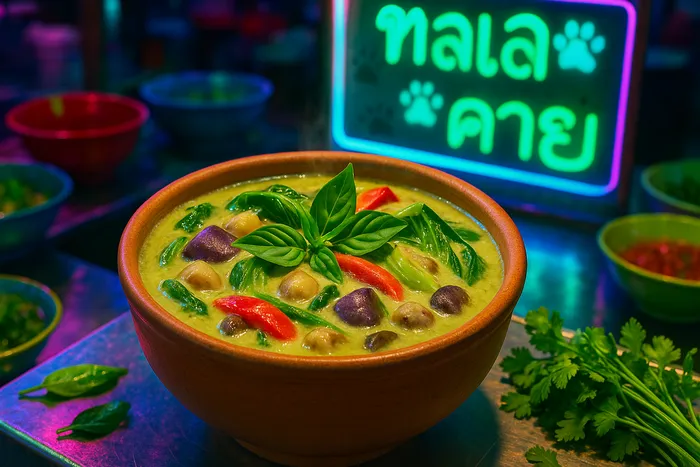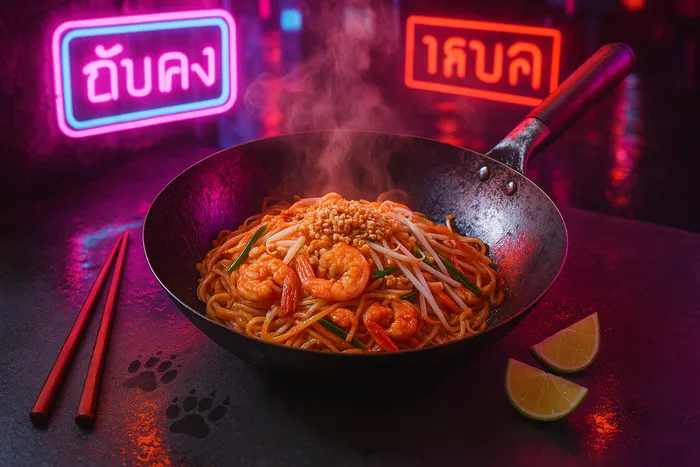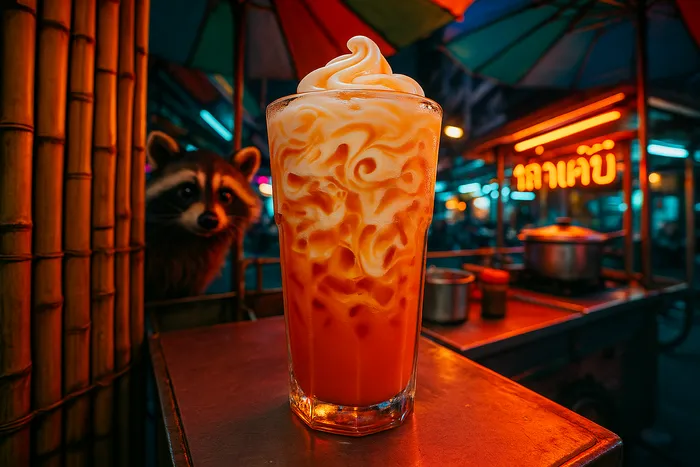travel
Thai Cuisine Guide

Raccook
December 6, 2024
3min read

Four flavors—sweet, sour, salty, spicy—dancing in perfect balance on your tongue. That's the magic Thailand taught me, whether from a $1 street cart or a fancy Bangkok restaurant. Getting that balance right isn't just technique; it's Thai philosophy applied to food.
Street Food Culture
Thailand's street food operates on specialization. Most vendors focus on one or two dishes, perfecting them over years or decades. This system creates incredibly consistent quality and allows for rapid service during busy periods.
Popular street food includes Thai Noodle Pad (stir-fried rice noodles), som tam (green papaya salad), and various noodle soups. Many vendors work the same locations for years, building regular customer bases who know exactly what to expect.
The key to good Thai street food is timing and technique. High heat cooking requires quick movements and precise ingredient additions. Most vendors prep ingredients throughout the day, allowing for fast assembly when orders come in.
Curry Types and Techniques
Thai curries are built from fresh paste made by pounding aromatics in a mortar and pestle. Common ingredients include chilies, galangal, lemongrass, makrut lime leaves, garlic, and shallots. Different curry types use different combinations and ratios of these base ingredients.
Regional variations are significant. Northern Thailand features khao soi, a coconut curry noodle soup with crispy noodles on top. Southern curries tend to be spicier and use more seafood. Central Thai curries from Bangkok often show royal court influences with more complex seasoning.
Major curry types include Thai Green Curry Vegetables (gaeng keow wan), red curry (gaeng phed), massaman curry (with Persian influences), and panang curry (thicker and nuttier). Each has distinct spice profiles and traditional protein pairings.
Markets and Ingredients
Thai markets offer extensive ingredient variety not commonly found elsewhere. Multiple types of basil serve different purposes: Thai basil for stir-fries, holy basil for pad kra pao, and lemon basil for salads. Similarly, different chilies provide specific heat levels and flavor profiles.
Key ingredients include fish sauce (umami and salt), palm sugar (subtle sweetness), tamarind (sourness), and coconut milk (richness and cooling). Fresh herbs like cilantro, mint, and various basils are used liberally, not just as garnish but as integral flavor components.
Floating markets still operate in some areas, though many cater primarily to tourism. Traditional morning markets in residential areas provide better insight into daily Thai cooking ingredients and techniques.
Essential Techniques
Thai cooking relies heavily on balancing flavors during cooking rather than following exact measurements. Cooks taste frequently and adjust seasoning throughout the process. This approach requires understanding how each ingredient affects the overall flavor profile.
Rice preparation varies by type. Jasmine rice is steamed and should be aromatic and slightly sticky. Sticky rice requires overnight soaking and special steaming techniques, essential for dishes like Thai Mango Sticky Rice. Both require proper water ratios and timing.
Stir-frying demands high heat and quick cooking times. Ingredients are added in specific orders based on cooking time requirements. The wok rarely stops moving, and ingredients should retain texture and vibrant colors.
Connecting Thai Techniques
Thai cooking principles apply to many dishes beyond traditional recipes. Classics like Thai Iced Tea and Thai Coconut Pancakes Khanom Krok showcase Thai flavor balance in drinks and desserts. The balance concept works well with the Perfect Sushi Rice preparation, and understanding fermentation from the Fermentation Journey helps explain fish sauce production and usage.
Thai cuisine emphasizes fresh ingredients, proper technique, and flavor balance over complex equipment or expensive ingredients. These principles translate well to home cooking regardless of specific recipe origins.








